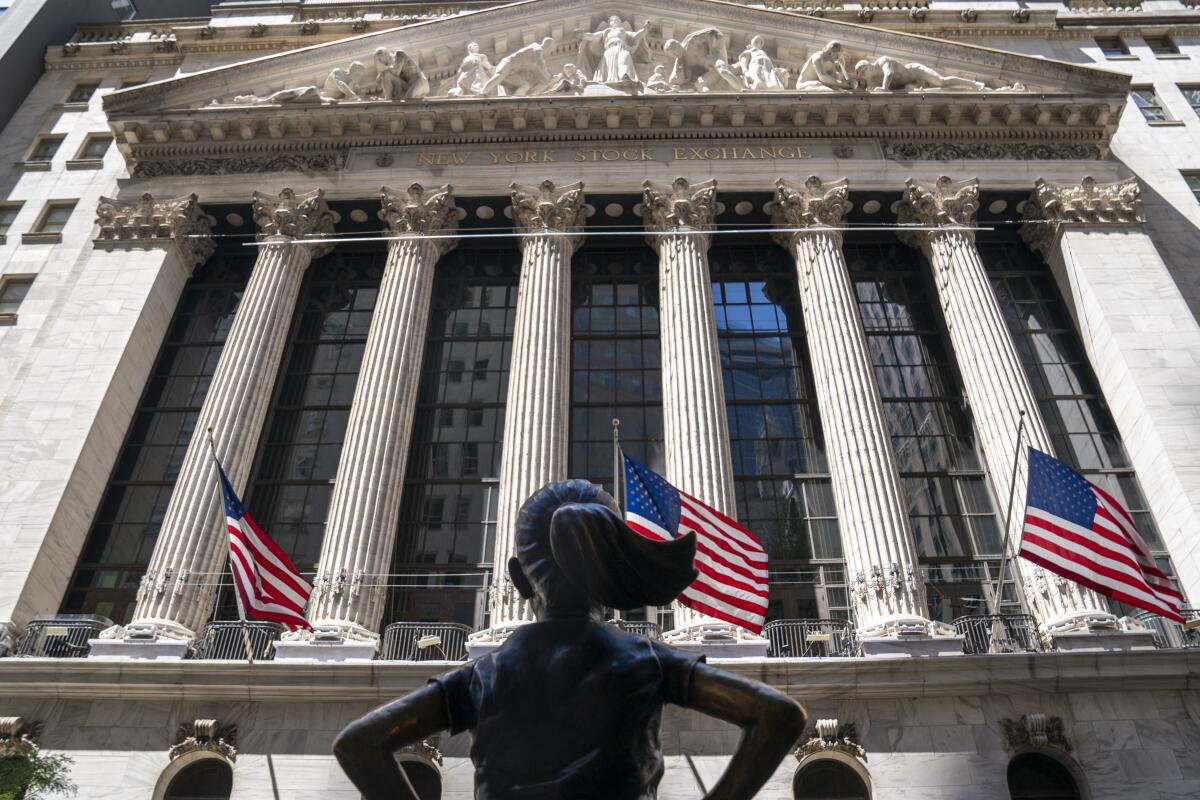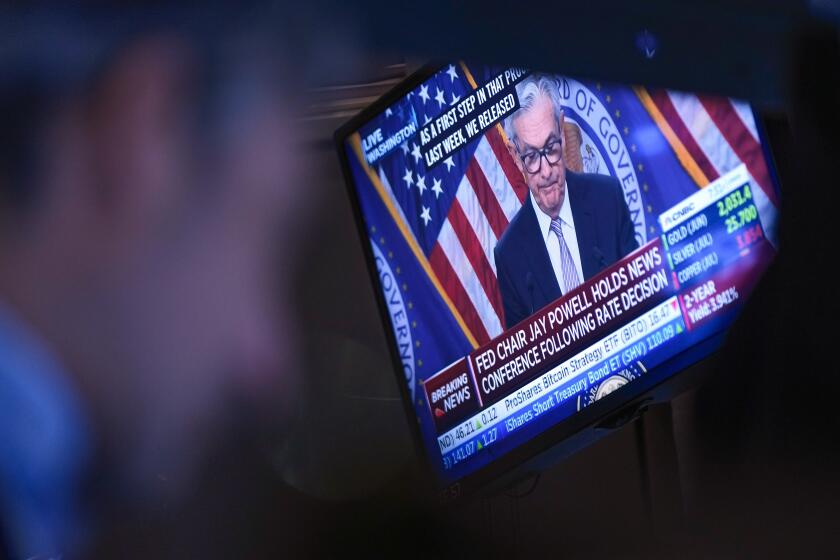Wall Street slips, and its best week since March comes to a quiet close

- Share via
Wall Street closed out its best week since March with a quiet finish Friday, and stocks drifted to modest losses.
The Standard & Poor’s 500 fell 16.25 points, or 0.4%, to 4,409.59 after wobbling through the day. It still closed out a fifth straight winning week for its longest such streak since November 2021, and it remains close to its highest level since April 2022.
The Dow Jones industrial average slipped 108.94 points, or 0.3%, to 34,299.12, and the Nasdaq composite fell 93.25 points, or 0.7%, to 13,689.57.
Humana dropped 3.9% for one of the S&P 500’s sharpest losses after becoming the latest health insurer to warn about rising costs because of pent-up demand for medical services. Health insurance giant UnitedHealth issued a similar warning earlier in the week.
The Federal Reserve kept its key interest rate unchanged Wednesday after having raised it 10 straight times to combat high inflation.
Treasury yields rose. The yield on the 10-year Treasury note rose to 3.76% from 3.72% late Thursday.
The yield on the two-year Treasury, which moves more on expectations for the Federal Reserve, rose to 4.72% from 4.65%.
The Fed held steady on its benchmark interest rate at its meeting this week but warned that it could raise rates twice more this year. The central bank’s next meeting will run July 25 and 26, and Wall Street is betting that it will raise rates. Traders are mostly convinced that will be the last increase of the year, according to data from CME Group.
Before taking its pause this week, the Fed had raised interest rates at 10 straight meetings since March 2022. Its goal has been to slow the economy to cool inflation but not so much that it causes a recession.
“The idea that the Fed is pausing and taking time to see what the cumulative effect is on the economy from a policy standpoint is the right move for them,” said Charlie Ripley, senior investment strategist for Allianz Investment Management.
The S&P 500 has soared nearly 15% higher this year because of hopes that the Federal Reserve will end its interest rate hikes soon as inflation cools and that the economy will avoid a severe recession. Most of Wall Street’s gains have come from big tech stocks, the ones that would benefit most from easier rates.
The Fed’s latest meeting was preceded Tuesday by a report showing that inflation continued cooling in May.
A closely watched survey on Friday suggested U.S. consumers are also paring back their expectations for upcoming inflation. That’s key for the Federal Reserve, which doesn’t want high expectations for inflation to kick off a vicious cycle that worsens it. The preliminary reading from the University of Michigan’s survey also suggested consumer sentiment is strengthening more than expected.
Overall, investors contended with a mixed batch of economic updates this week. Sales at U.S. retailers unexpectedly strengthened in May. The resilient employment market showed some signs of weakening as slightly more workers applied for unemployment benefits last week than expected. The manufacturing sector, meanwhile, continued contracting under the weight of higher interest rates.
Wall Street has also been closely monitoring the latest statements from companies to get a better sense of where the economy is headed. Analysts have been warning of a potential recession this year, but the economy has so far been strong enough to resist. Several industries, though, have been warning about waning demand that could linger through the year.
Chemical company Cabot slumped 8.1% after it said soft demand worldwide, and especially in China, would hurt earnings this year.
Software maker Adobe rose 0.9% after reporting solid financial results and raising its profit forecast.
Markets in Europe and Asia gained ground.
Investors have a considerably quieter week ahead, with just a few economic updates on the housing market. U.S. financial markets will be closed Monday in observance of Juneteenth.
More to Read
Inside the business of entertainment
The Wide Shot brings you news, analysis and insights on everything from streaming wars to production — and what it all means for the future.
You may occasionally receive promotional content from the Los Angeles Times.











